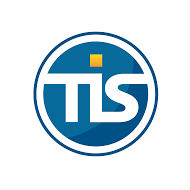Why Steven decided to explore the World of Treasury
| 02-09-2019 | by treasuryXL | Kendra Keydeniers
 Steven de Klein decided to take a deeper dive into the world of treasury and started the RT program in 2014. He graduated as Register Treasurer (RT) in 2017. Before moving into treasury, he studied Business Economics in Nijmegen. His first experience in treasury was a good one, “The field of treasury is much greater than most people expect” said Steven.
Steven de Klein decided to take a deeper dive into the world of treasury and started the RT program in 2014. He graduated as Register Treasurer (RT) in 2017. Before moving into treasury, he studied Business Economics in Nijmegen. His first experience in treasury was a good one, “The field of treasury is much greater than most people expect” said Steven.
Steven is Cash & Currency Manager at Royal Boskalis Westminster NV, a Dutch dredging and heavylift company. With its roots in the Netherlands, Boskalis has over 100 years’ experience in hydraulic engineering, coastal protection and land reclamation. The head office is located in Papendrecht and they have an extensive network of branches around the world. They operate in 90 countries and across six continents, with a versatile fleet of more than 900 vessels and floating equipment. Shares in the company have been listed on Euronext Amsterdam since 1971.
We asked Steven 4 questions about the RT program:
-
What for you was the main reason to start a career in treasury?
During my final year at the Radboud University in Nijmegen where I studied Business Economics, I started at a small advisory firm specialized in (corporate) financing. That was my first experience in treasury and it suited me well. Soon afterwards I joined a development & construction company that showed me that treasury was more than just financing and before you know it, you are a ‘treasurer’.
-
Why did you start with the RT program?
After working within the same company for a few years I noticed that my learning curve was leveling out. I started to investigate what treasury courses and programs where available and found that the RT program is without any doubt the best and most comprehensive treasury course available in The Netherlands.
-
How did the education help you in your career?
Not only did I gain a lot of new knowledge about treasury, but also about related topics such as macro-economics, fiscal law and (hedge) accounting. This helps to connect the dots a lot better when you’re back at your daily job. It also brought me a new network of people, good memories and I even think my current job at Royal Boskalis Westminster NV.
-
Are you still in touch with your peers?
Absolutely, during the 2-year program you built a strong relationship with your peers, since you do spend almost a full day per week with them. This is also one of the bigger benefits of the RT program in comparison to at-home studies.
We have more RT stories to share with you. Read the RT story of Bouke, Michel, Jarno, Mathieu and Richard and/or read more info about the RT program here.
The post-graduate Executive Treasury Management & Corporate Finance programme combines two finance disciplines: Treasury Management and Corporate Finance. These disciplines largely overlap and are inextricably connected.
After a successful completion of all required modules, the title of Registered Treasurer (RT) is conferred by the Registered Treasurer foundation.
As of last year the Register Treasurer (RT) program at the University of Amsterdam is taught in English. This is an important change as the program used to be in Dutch.
The course started on 1 September 2019.















 Auke Middel
Auke Middel


